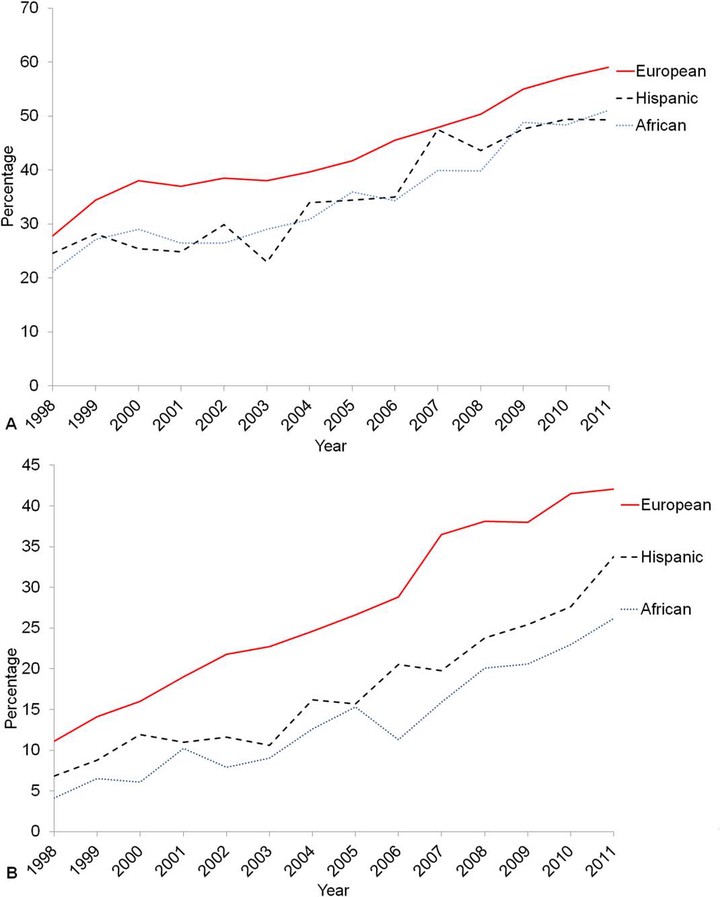Emerging trends in surgical and adjuvant radiation therapies among women diagnosed with ductal carcinoma in situ

Abstract
BACKGROUND: The use of surgery and radiation therapy in treating ductal carcinoma in situ (DCIS) is directed by treatment guidelines and evidence from research. This study investigated recent patterns in DCIS treatment by demographic factors. METHODS: Data for women diagnosed with DCIS between 1998 and 2011 (n = 416,232) in the National Cancer Data Base were assessed for trends in treatment patterns by age group, calendar year, ancestral/ethnic group, and geographic region. The likelihood of receiving specific treatment modalities was analyzed with multivariable logistic regression. RESULTS: DCIS cases were most frequently treated with breast-conserving surgery (BCS) and adjuvant radiation (45.6%). After an initial rise, the use of adjuvant radiation after BCS plateaued at approximately 70% after 2007, with increasing utilization of mastectomy beyond 2005. In addition, there was an increasing trend in postmastectomy reconstruction over time, and women of African ancestry (odds ratio [OR], 0.69; 95% confidence interval [CI], 0.66-0.72) and Hispanic women (OR, 0.83; 95% CI, 0.78-0.89) were less likely to undergo reconstruction in comparison with women of European ancestry. A similar trend was observed in contralateral risk-reducing mastectomy utilization, with women of European ancestry having a more rapid rise in the utilization of contralateral risk-reducing mastectomy in comparison with all other ancestral/ethnic groups. CONCLUSIONS: Recent trends demonstrate a plateau in radiation therapy administration after BCS along with increasing utilization of mastectomy, reconstruction, and contralateral risk-reducing mastectomy. There are substantial differences in treatment utilization according to ancestry/ethnicity and geographical region. Further studies examining patient-physician decision making surrounding DCIS treatment are warranted.